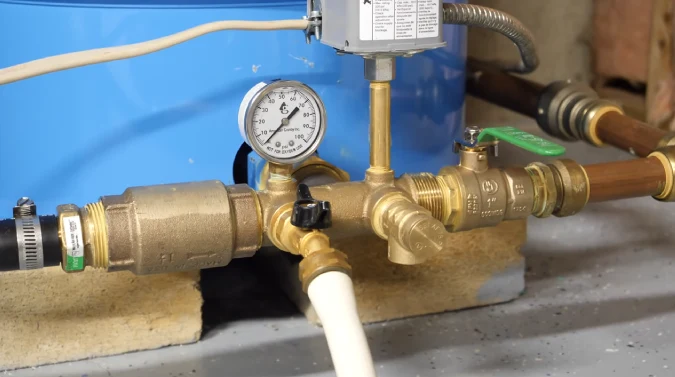Last Updated on October 5, 2023
The steady and reliable water supply from a well pump is essential for various daily activities, from showering and cooking to irrigation and household chores. However, encountering pressure loss in your well pump system can be frustrating and disruptive and several factors can contribute to this issue.
For one thing, clogged or dirty filters can restrict water flow, leading to decreased pressure. Air in the system can disrupt the pumping process and reduce pressure.
Also, leaking pipes or fittings can cause water to escape, diminishing the overall pressure. It’s also worth checking the pressure switch, as a faulty switch can fail to activate the pump properly.
Here, we will discuss the reasons behind the well pump losing pressure issue and provide you with valuable insights on what you can do to fix it. So, sit back, relax, and let’s get to the bottom of this.
Why Is Your Well Pump Losing Pressure and What Should You Do?
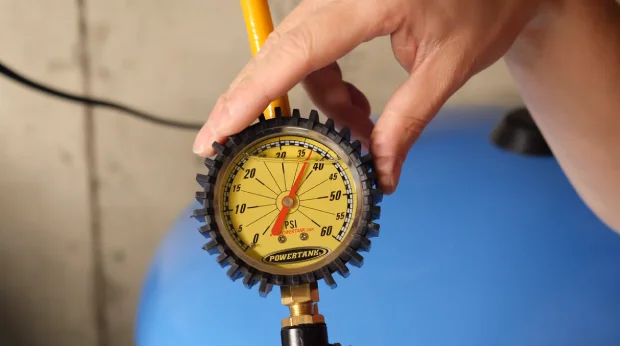
If you’re experiencing a loss of pressure in your well pump, there are a few potential culprits to consider.
- Clogged or dirty filters
- Air in the system
- Leaking pipes or fittings
- Faulty pressure switch
- Failing pressure tank
- Depleted water table
- Electrical problems
- Mineral scale buildup
- Incorrect pump size
Let’s talk about each of these reasons and possible solutions.
No 1. Clogged or Dirty Filters
The most common reason for well pump pressure loss is clogged or dirty filters, which can restrict water flow and reduce pressure. Over time, debris, sediment, and minerals can accumulate in the filters, hindering the smooth flow of water. As a result, the pressure throughout your plumbing system will be affected.
To resolve this issue, you must regularly clean or replace the filters. Cleaning involves removing the filters and rinsing them with clean water to remove any accumulated debris. If the filters are too clogged or damaged, they may need to be replaced entirely.
No 2. Air in the System
Trapped air pockets within the water supply system can disrupt the smooth flow of water and result in pressure drops. When air gets caught in the pipes or plumbing fixtures, it prevents the water from moving through the system efficiently.
Opening faucets and valves allows the trapped air to escape, restoring proper water flow and pressure. Start by opening the highest faucet in your home and let it run for a few minutes. Then, move to the next highest faucet and repeat the process.
Continue this method until you have opened your plumbing system’s faucets and valves. This will effectively remove any trapped air and improve the overall performance of your system.
No 3. Leaking Pipes or Fittings
You can locate and fix leaking pipes or fittings by checking for visible signs of water damage, such as damp spots or mold growth. Start by inspecting the areas around your plumbing system, including under sinks, basements, and along walls. Look for any wet or discolored patches that may indicate a leak.
Listen for any hissing or dripping sounds that could suggest a leaky pipe. Once you have identified the leak’s location, you can take steps to fix it. This may involve tightening loose fittings, replacing damaged pipes, or applying sealant to small cracks or holes.
It is important to address these leaks promptly to prevent further damage and maintain the proper pressure in your plumbing system.
No 4. Faulty Pressure Switch
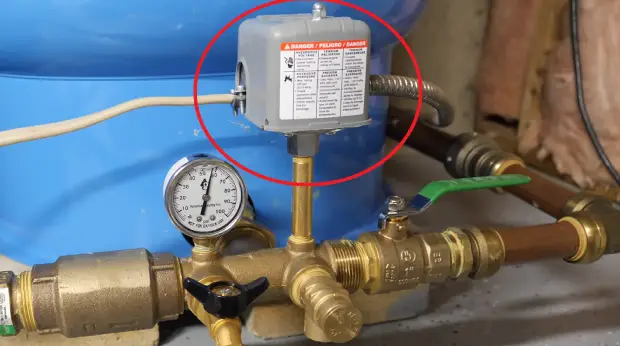
If your pressure switch is malfunctioning, it’s important to replace it to maintain consistent water pressure. The pressure switch is crucial in signaling your well pump to turn on or off based on specific pressure points.
When the pressure switch is faulty, it can lead to inconsistent pressure levels, causing frustration and inconvenience. You can ensure accurate pressure control by replacing the faulty pressure switch with a properly functioning one. This replacement will enable your pump to activate and deactivate at the appropriate pressure thresholds, ensuring a steady water flow throughout your home.
Choosing a pressure switch compatible with your well pump and meets the required pressure specifications is important.
No 5. Failing Pressure Tank
The failing pressure tank can cause inconsistent water pressure and should be replaced to restore stability in the system. When a pressure tank begins to fail, it loses its ability to store water under pressure effectively. This leads to pressure fluctuations and an overall unstable water system.
Over time, the tank may become waterlogged or damaged, further exacerbating the problem. Replacing the failing pressure tank with a new one that is properly sized and in good condition is crucial to restoring pressure stability. Choosing a pressure tank that meets the system’s requirements and is compatible with the well pump is important.
No 6. Depleted Water Table
If you’re experiencing a pressure loss in your well pump, one possible reason could be a depleted water table. This occurs when the groundwater level in the well drops below the intake point of the pump.
As mentioned earlier, drought or increased demand can contribute to this issue. The pump may struggle to pull enough water when the water table is low, resulting in decreased pressure.
To address this problem, monitoring changes in the water table regularly is crucial. If you notice a significant drop, consider drilling deeper to access a more reliable water source. This will help ensure that your well pump can continue to operate efficiently and maintain adequate pressure.
No 7. Electrical Problems
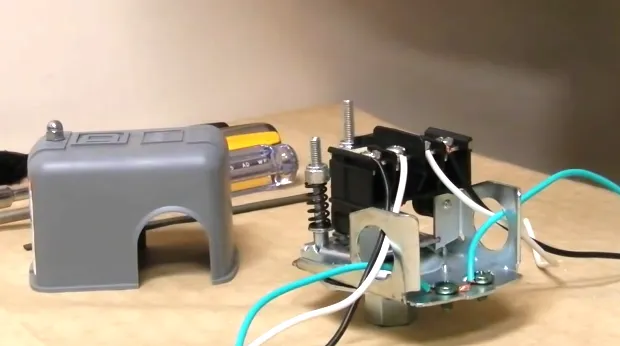
Depleted water tables can be caused by electrical problems such as voltage fluctuations or inadequate power supply. These issues can significantly impact the performance of your well pump, leading to a loss of pressure.
When your pump doesn’t receive a stable power source, it struggles to maintain consistent pressure levels, reducing water flow. To ensure optimal pump function and maintain desired pressure, it is crucial to address these electrical problems.
Start by ensuring proper wiring to prevent voltage fluctuations. Additionally, consider installing voltage regulation devices to stabilize the power supply to your well pump.
No 8. Mineral Scale Buildup
Regular maintenance and cleaning are essential to prevent mineral buildup in the well pump and maintain optimal water flow.
Over time, mineral deposits can accumulate within the pump and its components, such as the impeller and volute. These deposits, commonly known as mineral scale, can restrict water flow and reduce the pump’s efficiency.
Mineral scale buildup occurs when the water in the well contains high levels of minerals such as calcium and magnesium. As the water passes through the pump, these minerals can precipitate out and adhere to the surfaces, forming a hard, crusty layer. This layer can impede the pump’s ability to maintain pressure, reducing water flow and lowering water pressure.
Regular cleaning of the pump and its components is necessary to remove the mineral scale and restore the pump’s efficiency and performance.
No 9. Incorrect Pump Size
To ensure sufficient water pressure, you’ll want to ensure that the pump size is correct for your well’s specifications. Using an incorrectly sized pump can lead to a loss of pressure and an inadequate water supply.
An undersized pump may need help to meet the demand for water, especially during peak usage times. This can result in reduced pressure and an unsatisfactory water flow.
On the other hand, an oversized pump can also cause problems. It may cycle on and off frequently, causing unnecessary wear and tear on the pump and potentially leading to premature failure.
Therefore, choosing a pump that matches your well’s depth and water demand is crucial. Consulting with a professional and considering the well’s depth, water table level, and household water usage will help ensure that you select the correct pump size for optimal water pressure.
How can the groundwater quality affect well pump pressure?
When the groundwater contains high levels of minerals like iron or sediment, these substances can build up within the pump and pipes over time.
This buildup restricts the water flow and can significantly affect the pump’s ability to maintain pressure. As the minerals accumulate, they create blockages that reduce the diameter of the pipes, causing friction and hindering the flow of water.
Consequently, the pump has to work harder to overcome these obstacles and maintain the desired pressure. If left unchecked, this mineral buildup can lead to a decrease in water pressure and even potential damage to the well pump system.
Why does well pump pressure drop during extreme cold weather?
When the temperature drops significantly, you may notice a decrease in pressure from your well pump. This is because freezing temperatures can cause the water in the pipes to freeze, restricting the water flow. As a result, the pressure from your well pump decreases.
When the temperature rises and the pipes thaw, the water flow is restored, and the pressure should return to normal. It is important to note that extremely cold weather can also cause other issues that may contribute to a drop in well pump pressure.
For example, if the pump is not properly insulated or if there are leaks in the system, the cold weather can worsen these problems and lead to a decrease in pressure. Therefore, taking proper precautions and addressing any issues is crucial to ensure that your well pump operates effectively during extreme cold weather.
Can a well pump’s age impact its pressure performance?
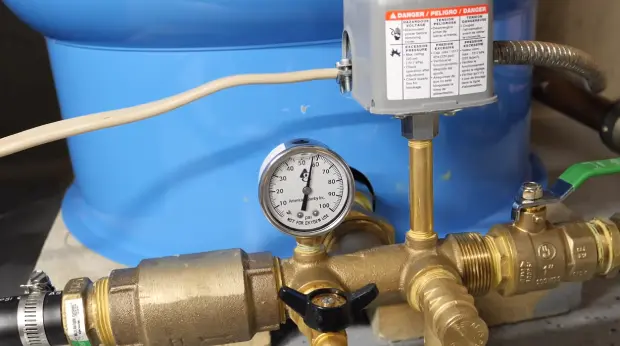
If you’re wondering why your well pump is losing pressure, one possible factor could be its age. As a well pump ages, its components can wear out or deteriorate, reducing efficiency and pressure loss.
Over time, the pump’s motor, impeller, and seals may become less effective, decreasing water pressure. Regular maintenance becomes crucial to mitigate these effects and ensure optimal performance.
This includes inspecting and replacing worn-out parts, checking for leaks or blockages in the system, and conducting routine cleaning and lubrication. Taking proactive measures can help maintain the pressure performance of your well pump as it ages.
Ensuring Consistent Water Pressure for Your Well Pump System
To function smoothly, your well pump system must maintain adequate water pressure for your household and other water-dependent activities.
Whether it’s clogged filters, air pockets, leaks, or issues with components like pressure switches and tanks, a comprehensive understanding of the potential reasons behind pressure loss is essential.
Through regular maintenance, timely repairs, and professional guidance, you can mitigate these factors and ensure that your well pump system delivers the desired water pressure consistently.
By addressing the challenges head-on and implementing the appropriate solutions, you can restore optimal pressure levels and continue to enjoy the convenience of a reliable water supply from your well pump.

